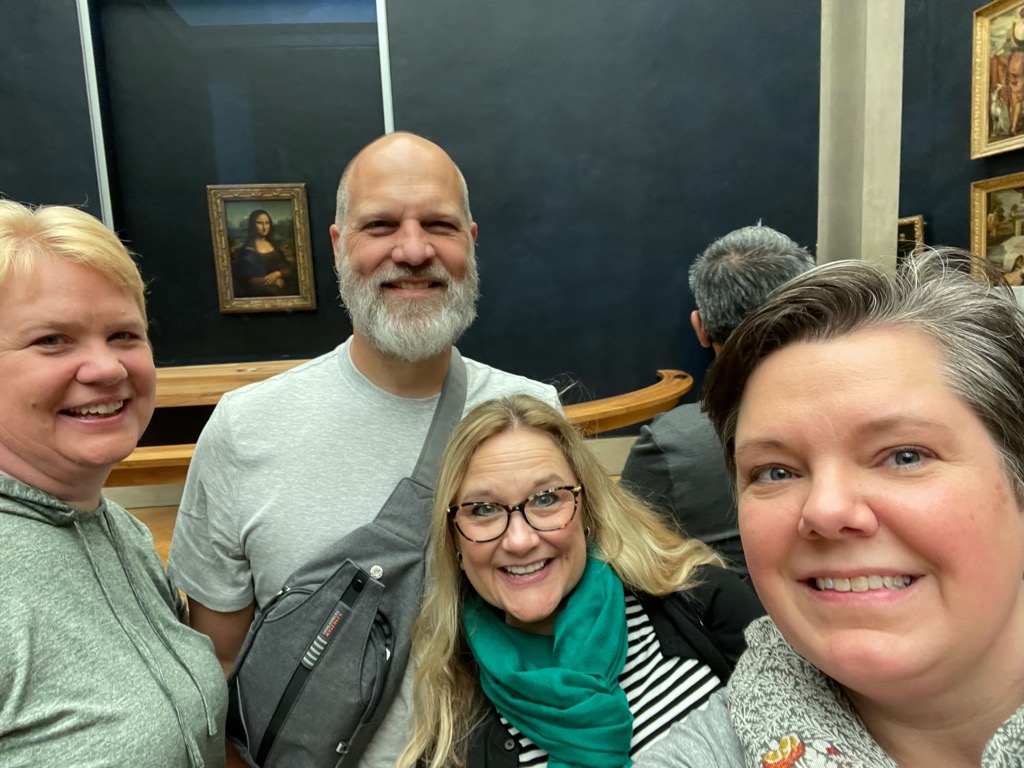Mona Lisa’s Smile
The museums of Paris showcase some of the world’s most creative and irreplaceable works of art. They guard most of them with the sort of twine you’d use to string up a badminton net, strung at ankle height about a foot from the wall. The level of trust startles you. You walk up to paintings daubed before Shakespeare ever penned a word, realizing you could easily run your fingers or a jelly donut across them. Your mind screams for bulletproof glass, laser beams, Indiana Jones-type spikes conspicuously tensed on springs to defend the art. Some works, of course, get more protection than others. The Mona Lisa has smiled from behind bulletproof glass since the 1950s. The cake thrown by the wig-wearing man last May was wiped off in minutes. For most paintings, drawings, and statues, however, you could easily reach out and touch. The rarity of patrons destroying masterpieces should restore some faith in humanity.
We began our first full day in Paris at the Louvre. We found the lesser-known entrance around the side from the guidebooks, but it was closed for construction. Undaunted, we traipsed to the famous pyramid entrance well ahead of our appointment.
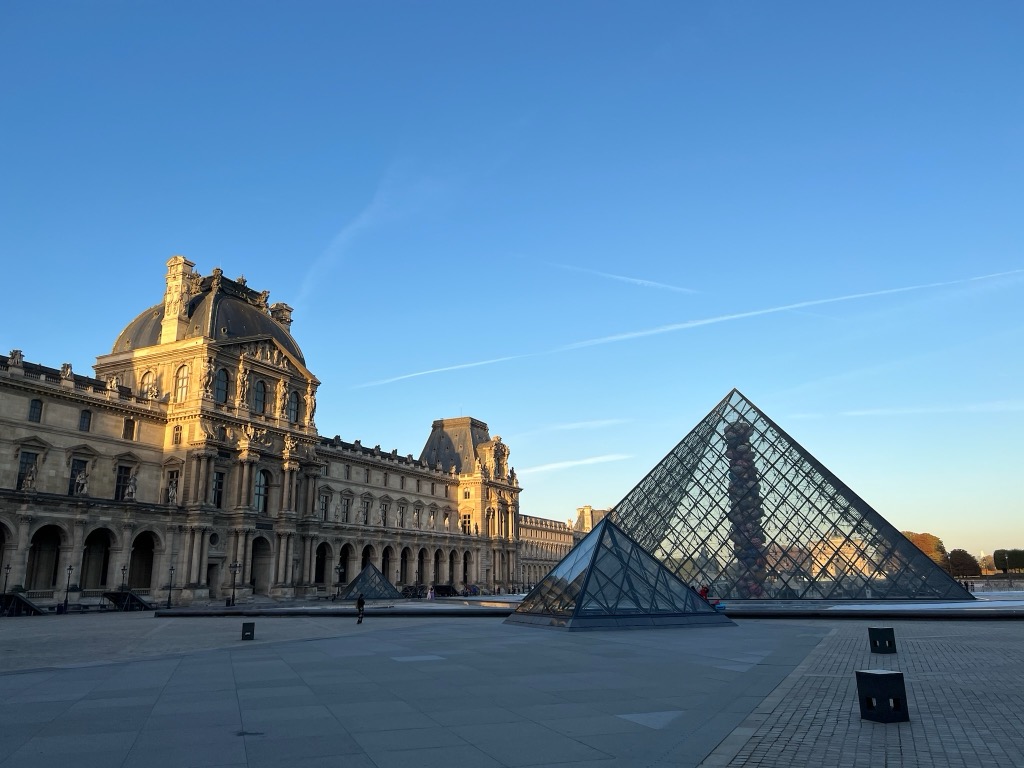
Once through the line, we followed arrows and crowds to the Salle des Etats where the Mona Lisa sits. Let me address some myths:
- The Mona Lisa is tiny.
- Fact: The Mona Lisa may not be a mural, but it’s no postage stamp, either. It’s 30" tall and 21" wide, or about the size of a 36" TV turned sideways. You almost certainly watched Seinfeld and The Sopranos on smaller screens. The computer screen you stare at all day is significantly smaller than the Mona Lisa.
- You can’t get close enough to see the Mona Lisa because tourists from a certain part of the world block everyone, snapping pictures like they’re paparazzi at The Academy Awards.
- Fact: I’m not naming the certain part of the world people always say, because I want no part in perpetuating racial or ethnic stereotypes. And while we saw tourists from all over the globe, no one monopolized any views or took pictures noticeably differently from anyone else. Everyone acted the same: respectful of shared space and shared experiences.
- Fact: A TSA-style line snakes from the back of the room to a few feet from the Mona Lisa. People get in line, advance at a reasonable pace, get to the front, look, take a few pictures, and move on. Everyone gets a turn.
- The Mona Lisa isn’t that great. It’s just popular because of its use in advertisements and overexposure. There are much better paintings to look at.
- Fact: It gets a lot of attention. It’s used in a lot of advertisements. Other paintings and artworks do indeed float in the same league — you could speculate, as I did, why other works aren’t similarly revered. But the Mona Lisa is a masterpiece. It’s incredible. It’s mesmerizing. I still can’t believe I saw it. Stood in its presence. Watch this episode of Great Art Explained in 15 Minutes to learn more.
Here are some pictures from the Louvre:

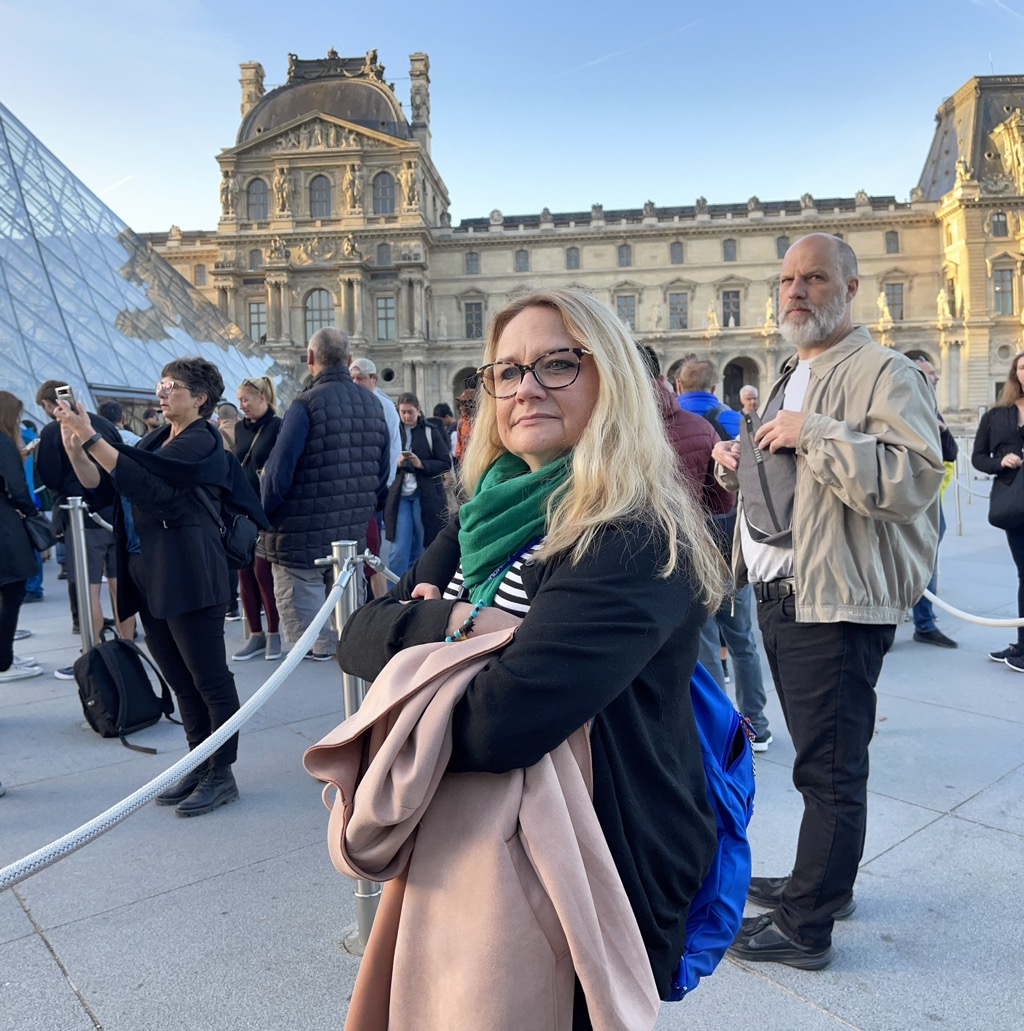
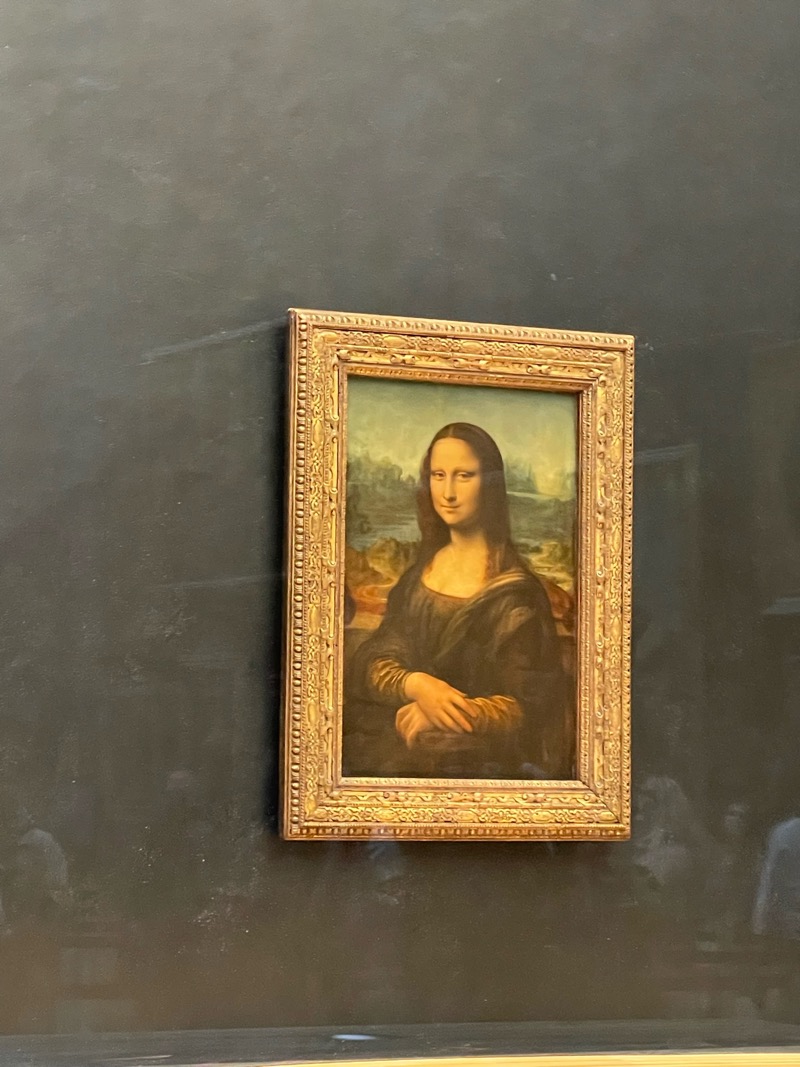
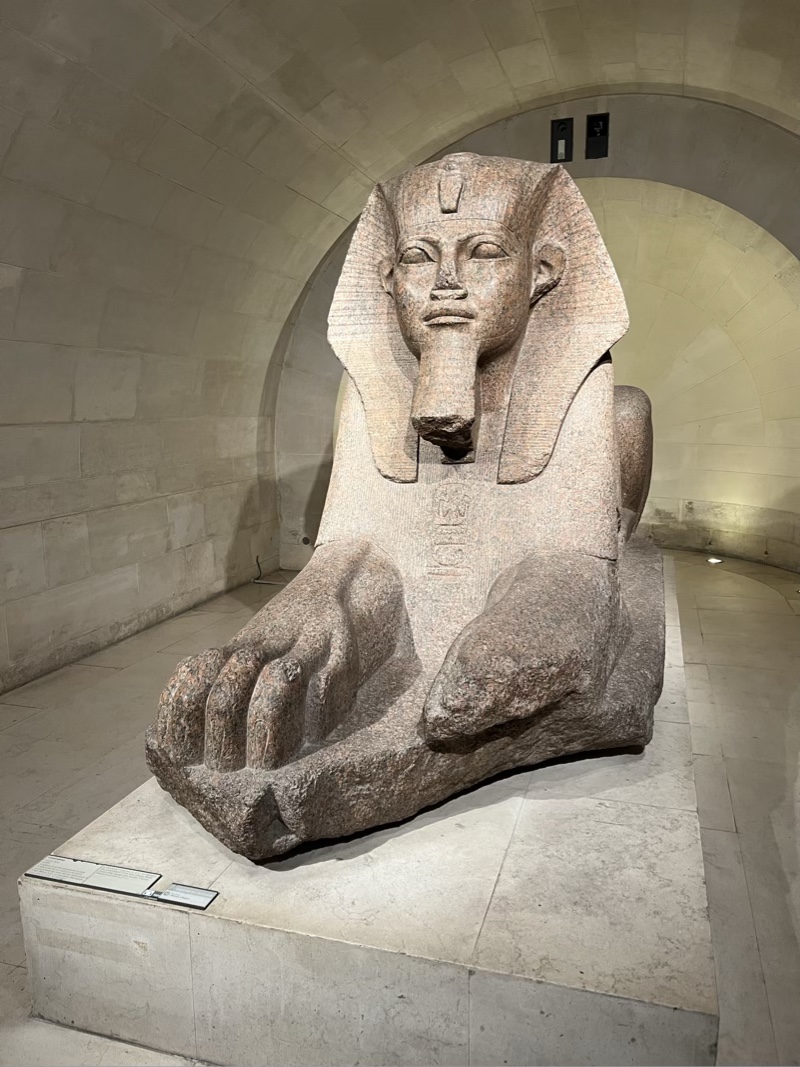
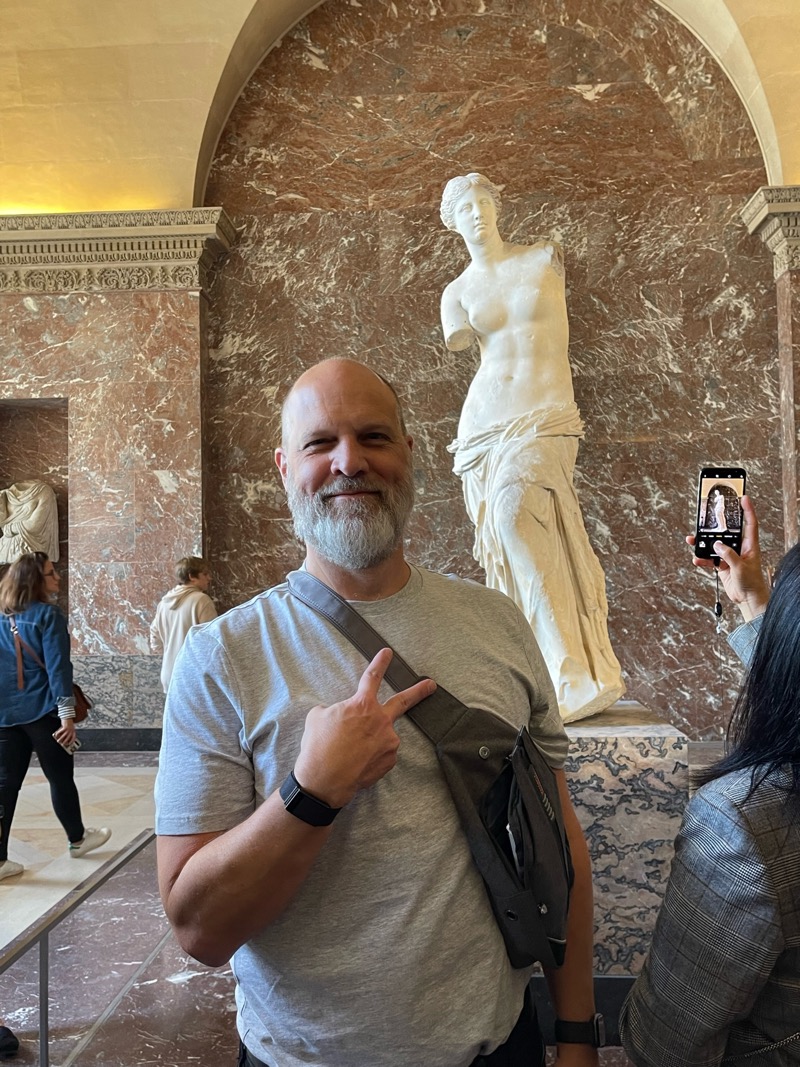
Yes, that is indeed the Venus de Milo.
Mostly, we wandered in the Louvre, the erratic tour of the uninformed. We could have rented Nintendo 3DS-based audio tours, but the lines for those seemed too long. I think I would get the audio tour the second go-round, but our haphazard approach to the Louvre experience worked well for the first visit. One thing we discovered while meandering is an exhibit on the Louvre itself. We learned that the Louvre originated as a fortress, became a palace, and then eased into its calling as a museum. The kicker? Some of the original fortress walls stand inside the Louvre. On display. The Louvre is a museum of the Louvre. Learning that history, seeing a diorama, and walking past the original walls reached me.
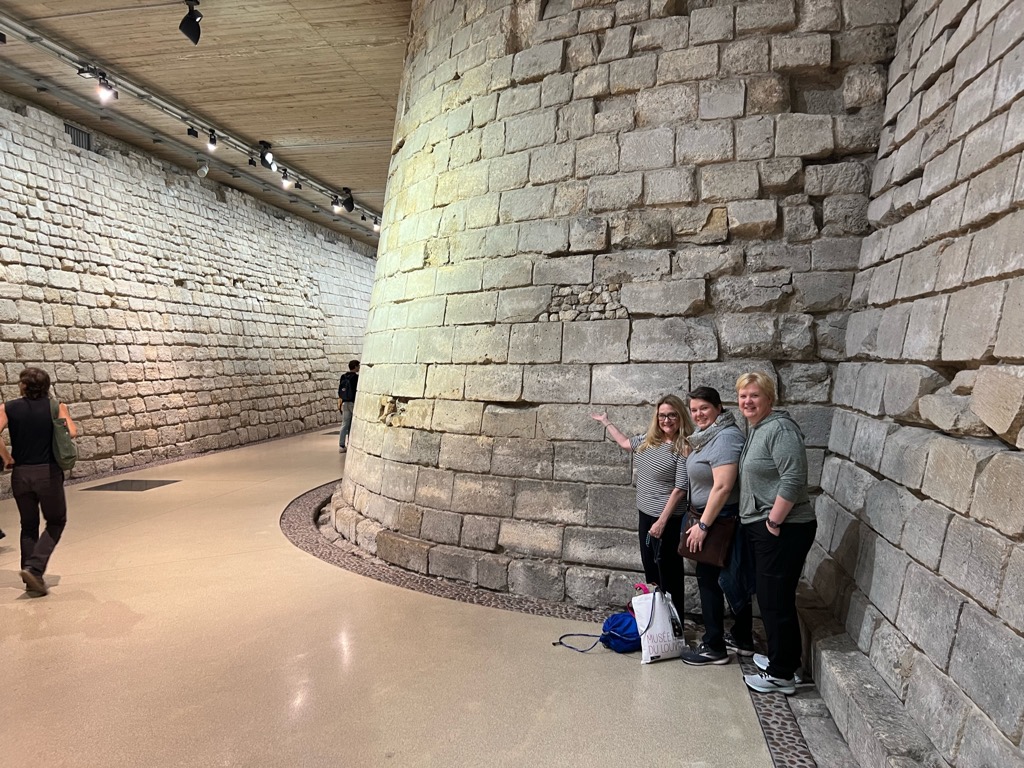
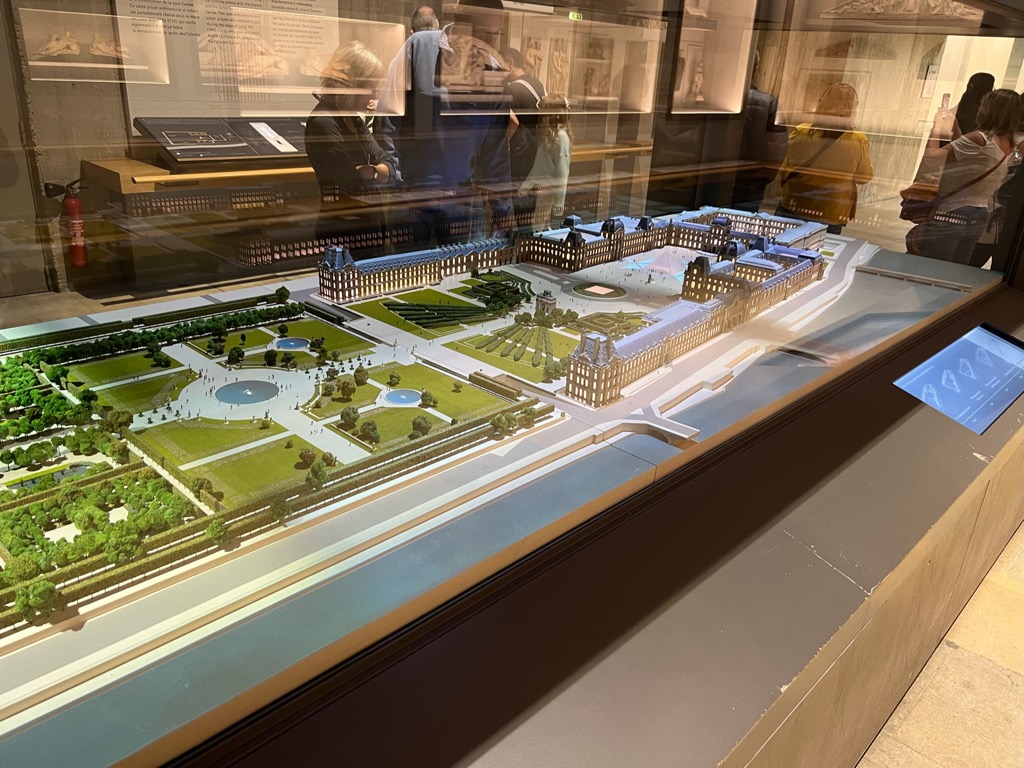
We saw painting the size of billboards, John the Baptist’s head sculpted on a platter, statues with enough detail to rouse the heart. They even got me to pose:
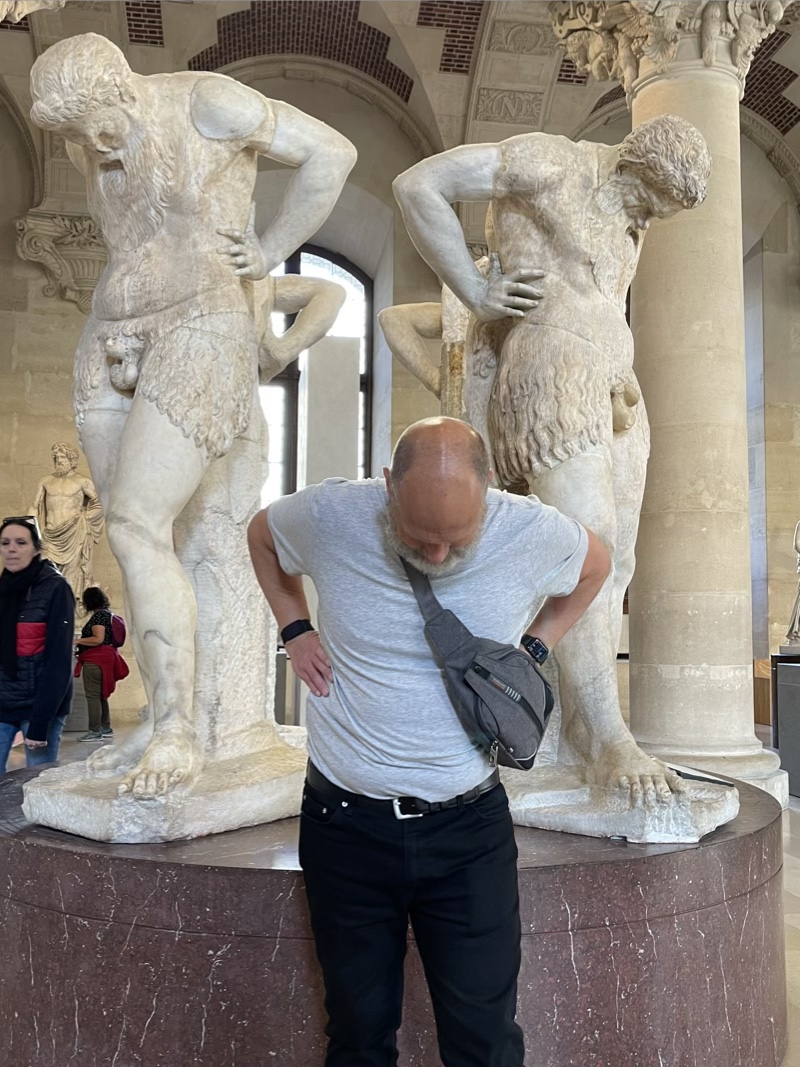
After we left, we walked through the Jardin des Tuileries, which was more park than gardens, and ate crepes in a cafe there. What could be more French than eating crepes in the Tuileries Garden?
I’ll end this post with another Mona Lisa group shot. Just to make you smile.
